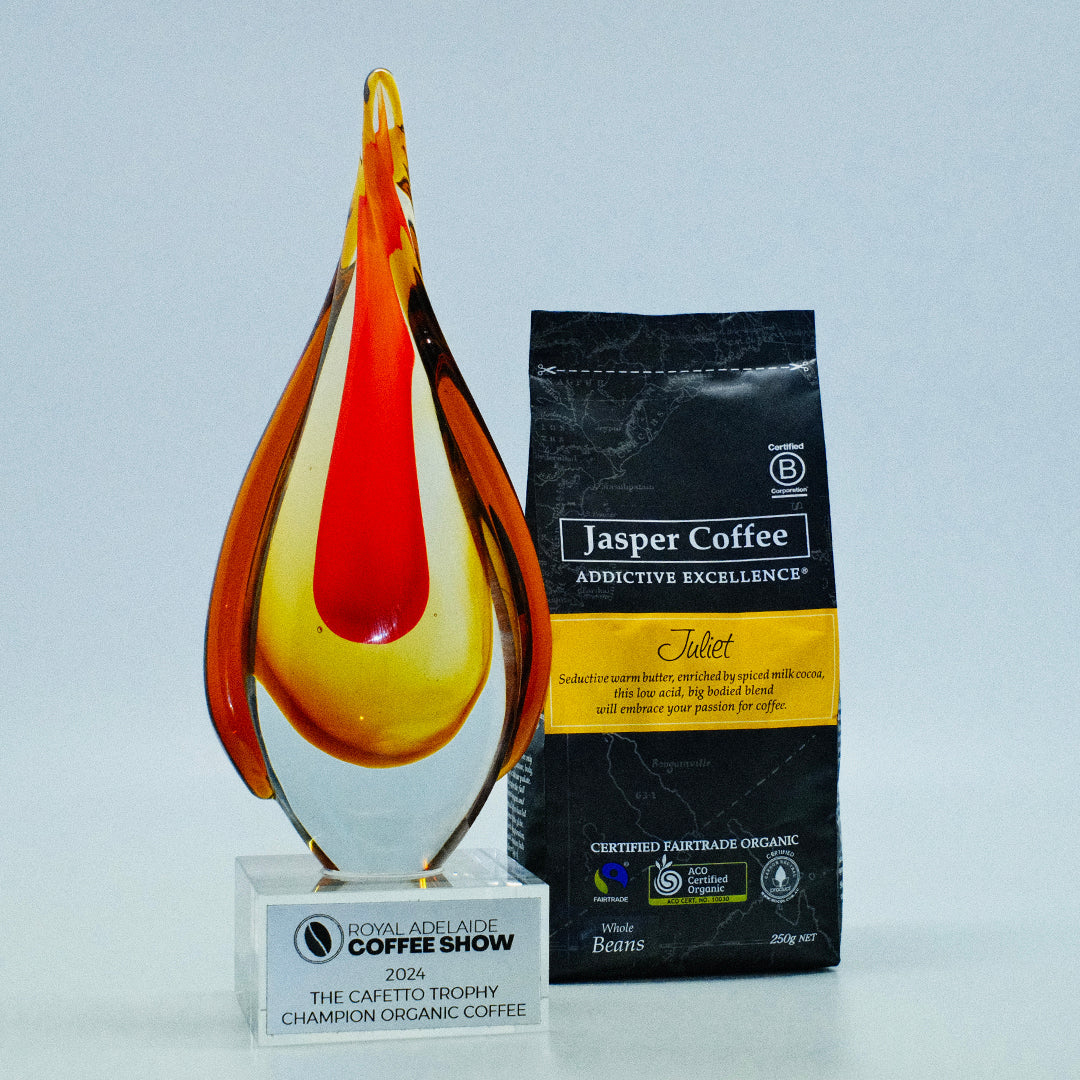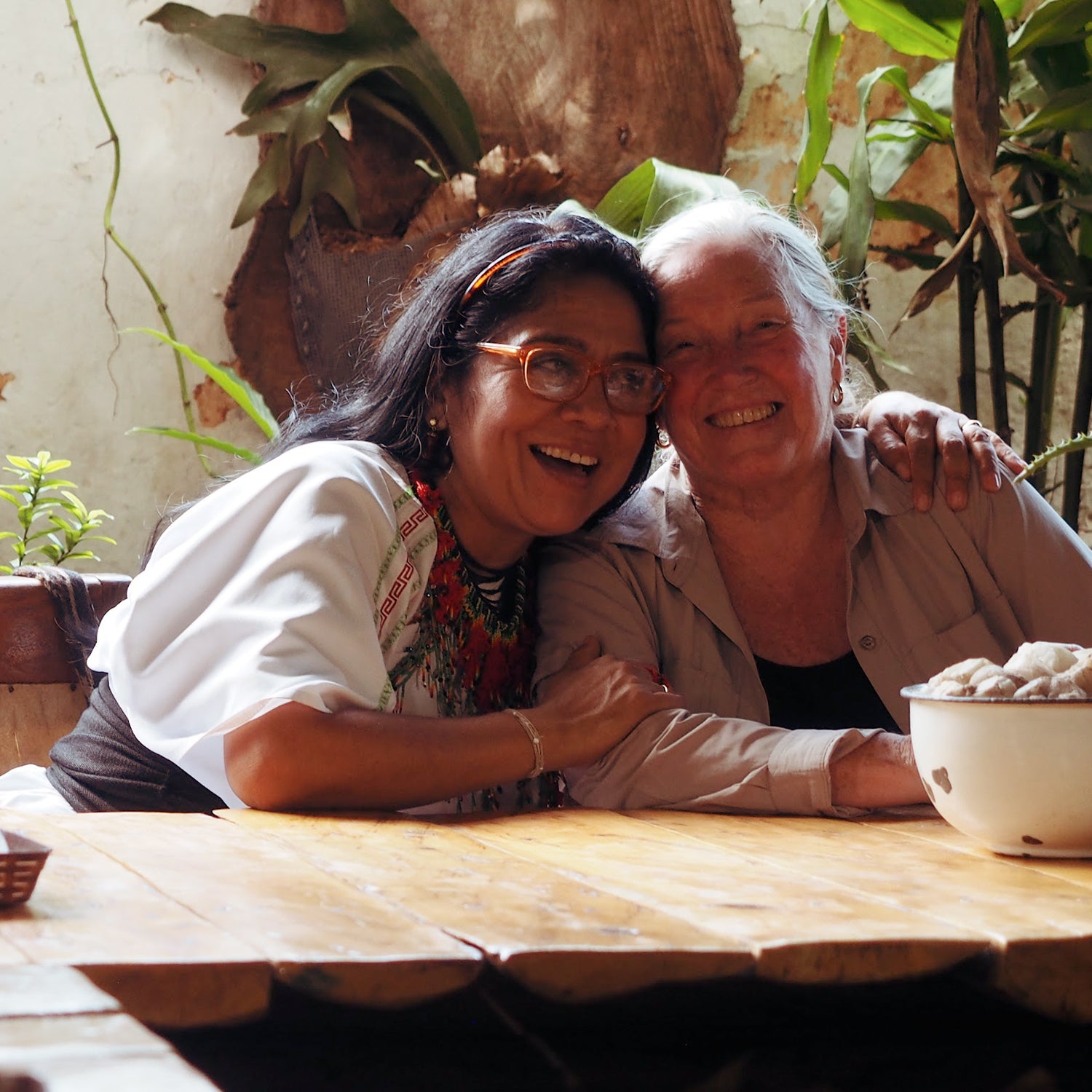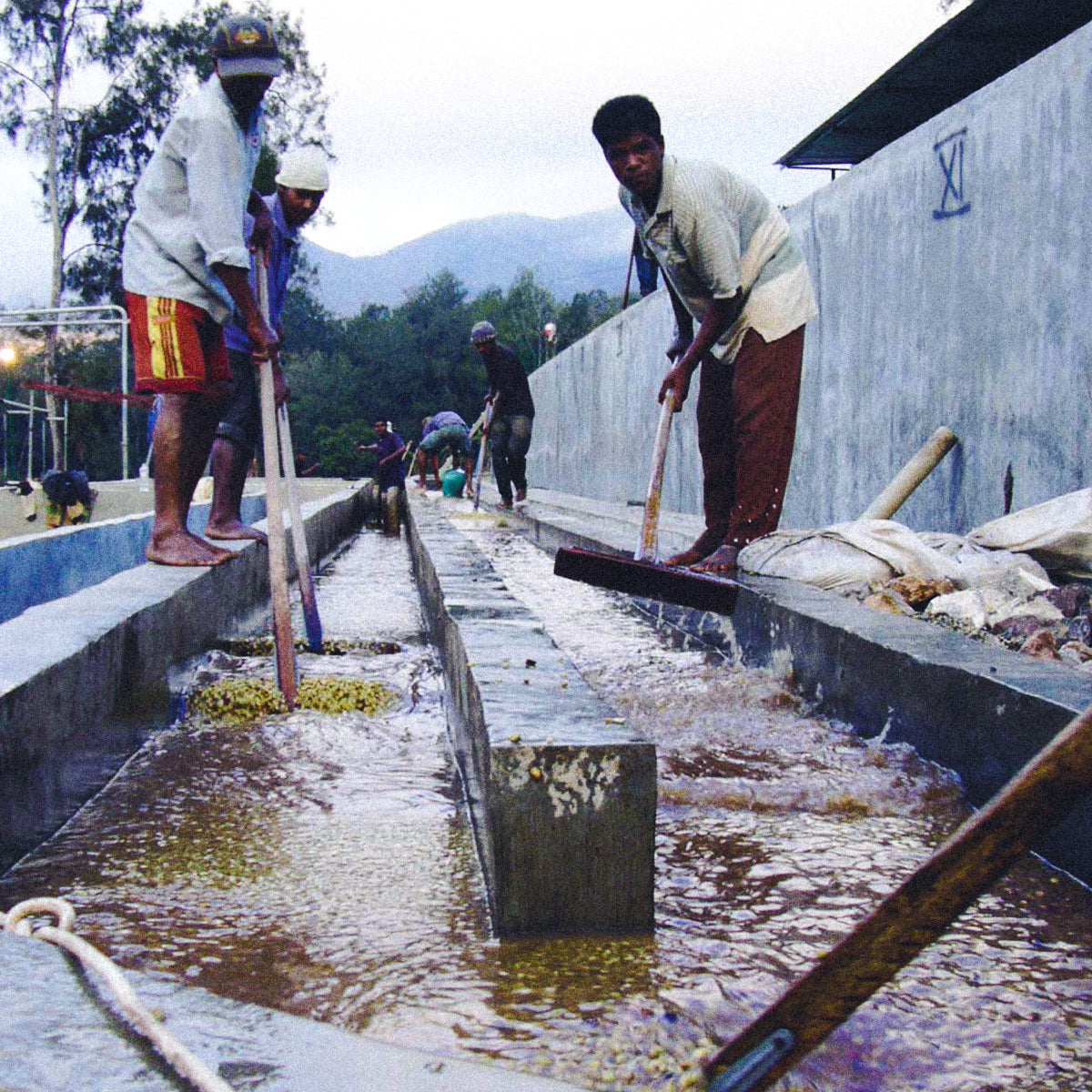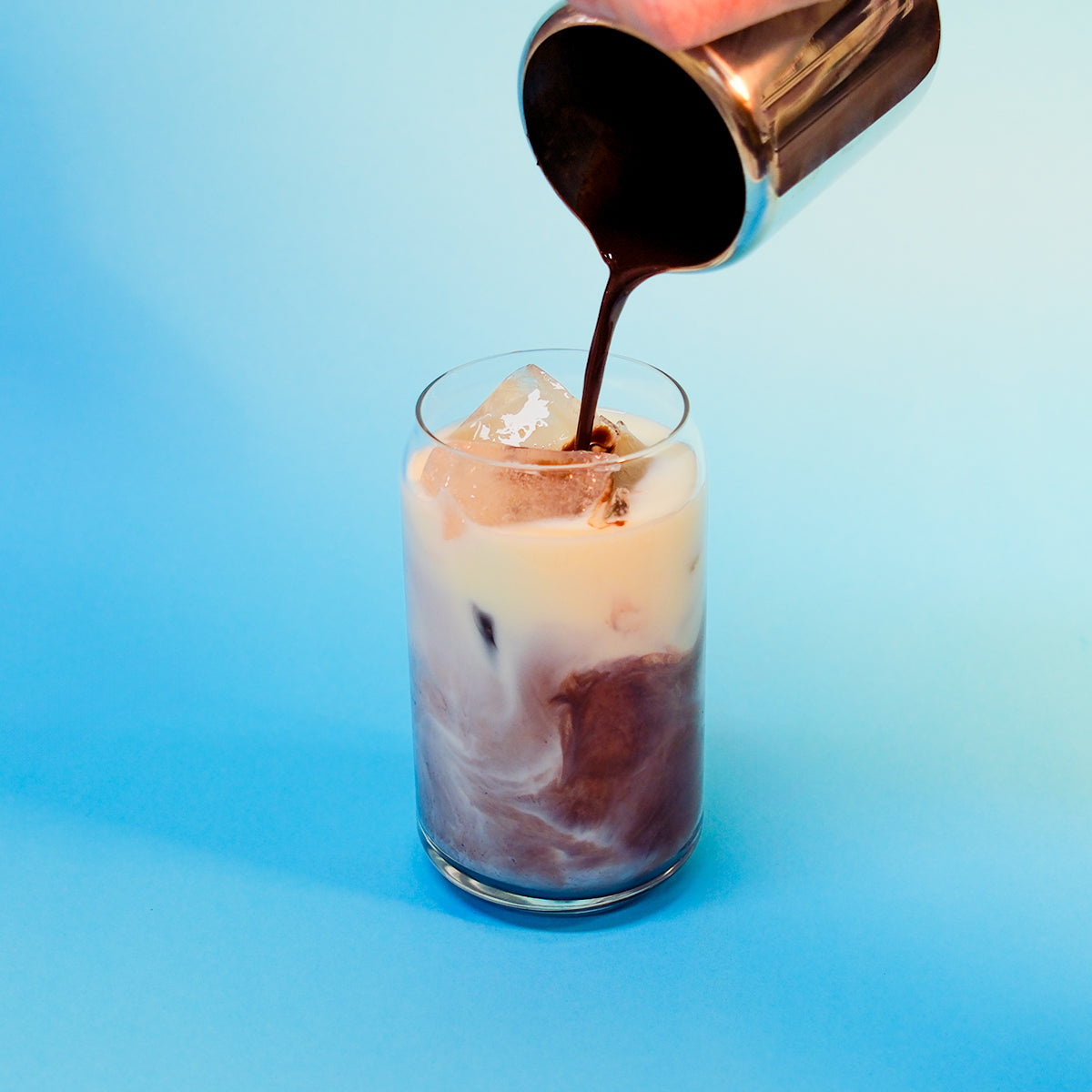Ever picked up a bag of coffee and noticed it says "washed" or "natural process"? Those aren't just fancy coffee words – they're actually huge clues about what you're about to taste.
Here's the gist: washed coffees tend to be smoother, cleaner, still they can be strong and full of subtle flavours. Natural process coffees are often the punchy, fruity types with sweetness in abundance.
But why does washing (or not washing) a coffee bean change how it tastes?
Let's dig in.
It All Starts With a Cherry
Coffee beans aren't actually beans. They're seeds that grow inside a fruit called a coffee cherry, they're genuinely delicious, sweet, juicy, lovely to eat straight off the tree. We've got a coffee tree in our Fitzroy store and it's always a treat when the cherries ripen.

Once growers pick these cherries, they've got decisions to make about how to process them. And that's where the magic (and the flavour) happens.
Natural Process: Letting Nature Do Its Thing
The simplest method? Just lay the whole cherry out in the sun and let it dry – fruit, mucilage, skin and all.
As everything dries together, all that fruity sweetness from the cherry seeps into the bean. That's why natural process coffees taste so bold and fruit-forward.
Sounds easy, right? Well, not quite. Getting this right is actually proper tricky. Growers need to constantly turn the cherries and time everything perfectly, or the coffee can end up tasting funky (and not in a good way).
It takes about 15-20 days (depending on the conditions) to dry the cherries properly using a natural process.
When it's done well though? Absolute magic in a cup.
Washed Process: Stripped Down to the Essentials
The other main approach is washing – and yes, it's as literal as it sounds.
Growers wash away the fruit and mucilage, leaving just the bare bean to dry. Without all that fruit flavour interfering, you get a much cleaner taste that lets the bean's natural characteristics shine through.
Some washing stations are incredibly sophisticated with fancy equipment. Others are beautifully simple. Either way can produce brilliant coffee – it's all about the skill and care of the growers.
Drying coffee with a washed process is a bit shorter, usually taking around 8-12 days.

Here is a photo Wells Trenfield took of washed coffee beans drying in the sun on the hills of Ethiopia. This in fact is the same beans that go into our Ethiopia Yirgacheffe single origin.
There's So Much More to Explore
Of course, this is just scratching the surface. There's a whole world of processing methods out there:
- Honey process (where some mucilage stays on)
- Semi-washed (a bit of both worlds)
- Experimental fermentation techniques
- And plenty more coffee nerds are inventing as we speak
Different de-pulping methods, fermentation times, drying techniques – every choice the grower makes ends up in your cup.
Your Coffee Homework
Next time you grab a bag of single origin, check the label. Is it washed or natural?
Now here's the fun bit: actually taste for the difference.
Can you pick up that clean, nuanced flavour in a washed coffee? Or those bold, fruity notes in a natural?
There's no right or wrong answer – just whatever makes your morning (or afternoon, or midnight espresso) that bit more special.
Want to try both?
Browse our single origins and pick one of each. Your taste buds will thank you.
For washed coffees try one of these:
For a great natural process coffee try:
- Photos by Wells Trenfield.













